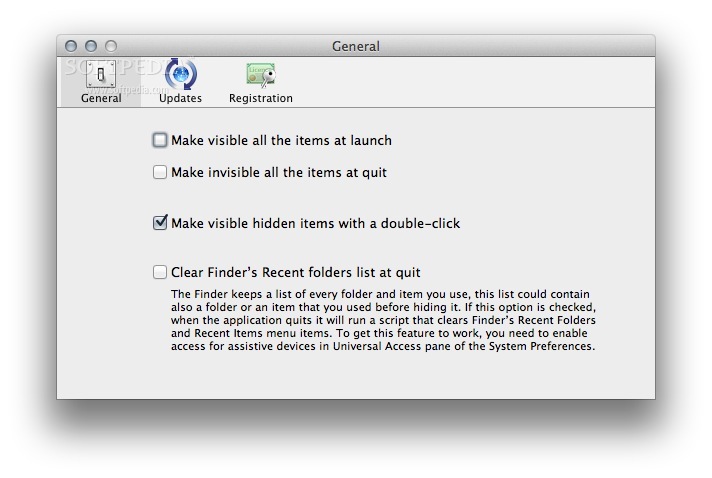

SECRET FOLDER FOR MAC MAC OS X
Mac OS X 10.7 Lion and above: By default, the ~/Library folder (which contains the profile folder, Crash Reports and other user data for Mozilla applications) is hidden.You can also right click on the directory listing in the file picker (such as the Attach files(s) window) and select "Show Hidden Files". If you enable "show hidden files" in the file manager when Mozilla calls the native file picker it will also show hidden files. You could modify filepickerLoad() in chrome/toolkit.jar/content/global/filepicker.js to call the function to show hidden files and folders but it is not recommended. Unfortunately that checkbox is not sticky, the next time you run the application you need to enable it again. It is typically faster and has a "show hidden files and directories" checkbox at bottom left. However, the Linux builds have a built-in file picker that you can enable by setting the ui.allow_platform_file_picker preference to false using either about:config or the Config editor (Thunderbird).

įirefox, Thunderbird and SeaMonkey use the native file picker by default (for example, when adding attachments). You can view them using a terminal window or a different file manager. Nautilus (the default file manager for Gnome) will not show any hidden files that end with a "~" (such as backup files generated by gedit). For example the Dolphin file manager doesn't have that command because it lets you enable showing hidden files by modifying the folders view properties. If it doesn't have that exact command it should have something similar. Most file managers (Nautilus, Konqueror, Thunar) have a "View -> Show Hidden Files" command that will make them visible. Linux hides files or folders that begin with a dot. To search for files or folders in hidden locations, click "Start -> Computer" and, in the window that opens, enter the name of the file or folder in the Search Computer box.
SECRET FOLDER FOR MAC WINDOWS

In Folder Options, click the "View" tab and, under "Hidden files and folders", select "Show hidden files and folders" ("Show hidden files, folders, and drives" on Windows 7). If you want to permanently enable it click the Organize button, go to Layout and select Menu Bar.) You can temporarily enable the menu bar by pressing the key. (Note: Windows Vista disables the File/Edit/View/Tools/Help menu in Windows Explorer. You can access Folder Options from the "Tools" menu in Windows Explorer (or "My Computer") or from Windows Control Panel. You can set Windows to show hidden files and folders by changing your "View" settings in Folder Options, as shown here on Windows XP.


 0 kommentar(er)
0 kommentar(er)
